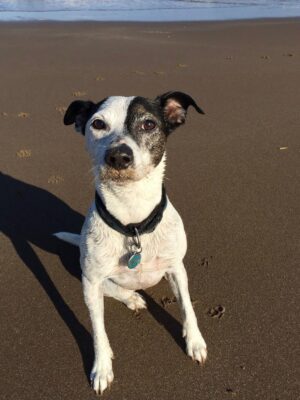How can these be treated?
The aim of treatment is to reduce the symptoms to a much more comfortable level but may not completely resolve them. It is important to be aware that if your pet is allergic, their treatment plan will likely be a management plan, rather than a cure: and they may have intermittent flare ups from time to time.
- Contact allergies can be treated by removing the allergen, sometimes antihistamines, anti-itching medication (Apoquel) or a short course of steroids is required.
- Food intolerance is treated by staying on a specialised food.
- Atopy can be treated in several ways;
Immunotherapy injections: Are personalised vaccines created from information on the allergy blood tests. These vaccines are specifically produced for your pet and include any allergens that have been indicated via blood testing. We start by injecting very small amounts of the vaccine every 2 weeks, building up to a maintenance program of a monthly injection. It can take 6-12 months before we know whether this program has been effective: we see an improvement in approximately 2/3 of patients.
Cytopoint injections: These are given monthly and are an immunomodulating injection: designed to try and adapt your pet’s allergic response. Many patients do very well on these, and we often see a response within the first 1-2 months.
Alternatively, oral medication may be necessary to control your pet’s symptoms. A commonly used oral medication is the specific antipruritic medication (anti-itch), Apoquel in dogs, which can be used in conjunction with the immunotherapy and cytopoint injections during a flare: or as a sole treatment. Atopica is an immunosuppressive medication, designed to reduce your pet’s immune response to the allergens.
Prednisolone steroid therapy and antihistamines are also commonly used but it is important to note these medications are human medications and not specifically licensed for pets. Some pets will only need therapy during certain seasons of the year, but some pets will need treatment all year round and may require regular 6 monthly health checks to ensure they are doing well.
For further information on these medications please see the links below;
Apoquel – (Oral Tablet)
Cytopoint – (This is a monthly Injection)
Atopica – (This is an oral tablet or solution) It works by altering the body’s immune system.
Prednisolone – this is a steroid oral tablet and often used to control moderate symptoms in the short term, but in severe cases that do not respond to other medications may be necessary longer term.
You can also reduce your pets contact with the allergen depending on what it is. For example, storage mites in dry food – wetting the food can reduce an allergic response to this, buying wet food instead or buying smaller bags of food. Another example is grass pollen – washing your pet’s feet with water after walks.














